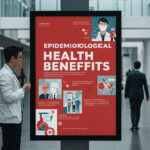Many companies and corporations do not have the proper training to fight deadly diseases in place. Although fighting transmissible diseases, which can be transmitted via bodily fluids or airborne particles, should be commonplace in the healthcare industry, many policies and practices are outdated. One thing that is more detrimental to health care than negligence? A lack of information.
Healthcare workers need to ensure their job is providing the proper training and resources to educate them about how to stop and slow the spread of deadly diseases. Without training, certifications, courses, and resources for education, employees will be the first to catch a contagious disease – and then spread it to the rest of the healthcare setting.
Let’s see why the healthcare industry’s disease training needs to be updated – and why bloodborne pathogen need to constantly change and evolve to continue being effective in society.
Time to update our bloodborne pathogen and Covid-19 training
As we can see with the Covid-19 pandemic, the healthcare industry needs to constantly adapt and evolve to changing measures and new diseases. Nobody saw the Covid-19 pandemic coming, and by the time we realized what was happening, I was almost too late. The entire world lost thousands of people to the disease, showing the dire consequences of what can happen if preventative and curative measures are not in place.
Due to the fast spread of transmissible diseases, healthcare corporations need to change their bloodborne pathogen and Covid-19 training to help prepare for any future airborne pathogens that can wreak havoc on the world.
President Biden has already made a declaration calling for the revision and new issuance regarding workplace safety for Covid-19, changing of emergency standards, improved enforcement to protect workers, and new OSHA measures to help healthcare personnel stay safe and protected.
OSHA issues a new NEP program
Back in March, OSHA issued a new program intended to help change the way the healthcare industry provides pathogen training. This new program, named NEP, was designed to help provide targeted inspections, alter outreach assistance, and enforce compliance. However, the President Thought this OSHA issuance was not enough – just 2 months later, an emergency standard was set to appear.
The new program aims to help reduce exposure to Covid-19 and bloodborne pathogens by focusing on the occupations and industries with a high exposure rate to disease. These occupations are typically healthcare workers, frontline workers, emergency personnel, long-term care facility workers, and other people exposed to patients or people in need.
The NEP framework can help lead to new bloodborne and Covid-19 training by controlling exposures and hazards associated with exposures.
What does this mean for the healthcare industry and businesses as a whole?
The new NEP program set forth by OSHA shows recognition of needing new practices in the healthcare industry. NEP focuses on protecting employees and workers who are especially susceptible to contracting diseases via bloodborne measures or airborne ways, such as Covid-19.
Regarding businesses of all kinds, compliance is vital. NEP focuses on safety and health practices, so ensuring your business is up to date with new preventive and safety measures is critical to adhere to OSHA standards. At a minimum, OSHA rules that each worksite should assess Covid-19 risk, preventative measures, and evidence the Covid-19 training plan is being followed by employees.
OSHA will not take this new measure and training lightly – any business not complying with the latest safety measures will be considered not compliant with the applicable standards set forth by the new guidance for protecting workers. Some of these measures that show compliance refers to respiratory protection, wearing personal protective equipment, reporting occupational injuries, reporting illnesses, employee exposure, and bloodborne pathogens standard training.
Will OSHA do inspections of my business?
Businesses will now have to keep up to date with their safety practices or fear OSHA will come to their workplace and find their safety measures not up to par. OSHA is organized into geographical regions – but each region has the same goal. The goal is to ensure every business follows the new NEP program to the highest standard, ensuring each Covid-19 inspection returns a high compliance rate.
Inspections are based on unprogrammed events and site-specific measures, checking up on facilities with many Covid-19 deaths, businesses that feature a high number of hospitalizations, or considered essential companies.
OSHA anticipates the highest number of inspections will typically be carried throughout the healthcare industry since this occupation has the most excellent chance of exposure to bloodborne pathogens or Covid-19 due to the number of ill patients. However, other facilities that house people for long periods, like prisons, long-term care facilities, or retirement communities, are also at a high chance of being inspected regularly.
These facilities are all at high chances of being susceptible to Covid-19, whether due to patients with physical disabilities, mental disabilities, or psychological concerns that make curbing the spread of infectious diseases more difficult.
Along with care facilities, sectors like poultry processing plants or meat packing facilities are at a high chance of having OSHA inspect their premises. Those who work at facilities that handle fluids, like blood, can be expected to have stringent safety measures implemented at the workplace.
Lastly, any place with a high number of exposures to bloodborne or airborne pathogens will be subject to higher control rates in the future. If various workers from one location have Covid-19 symptoms, like fever, chills, loss of taste, or nausea, this worksite will have more OSHA-related measures placed in the future.
Conclusion
As you can see, implementing new bloodborne pathogen training and Covid-19 preventative measures is absolutely key to keeping workers safe and protected. Although healthcare industries may feel their prevention plan is modern and up to date, this plan needs to constantly evolve to deal with the new transmissible diseases that creep into our society. Especially for occupations like healthcare workers and emergency personnel, new Covid-19 and pathogen training are essential.










